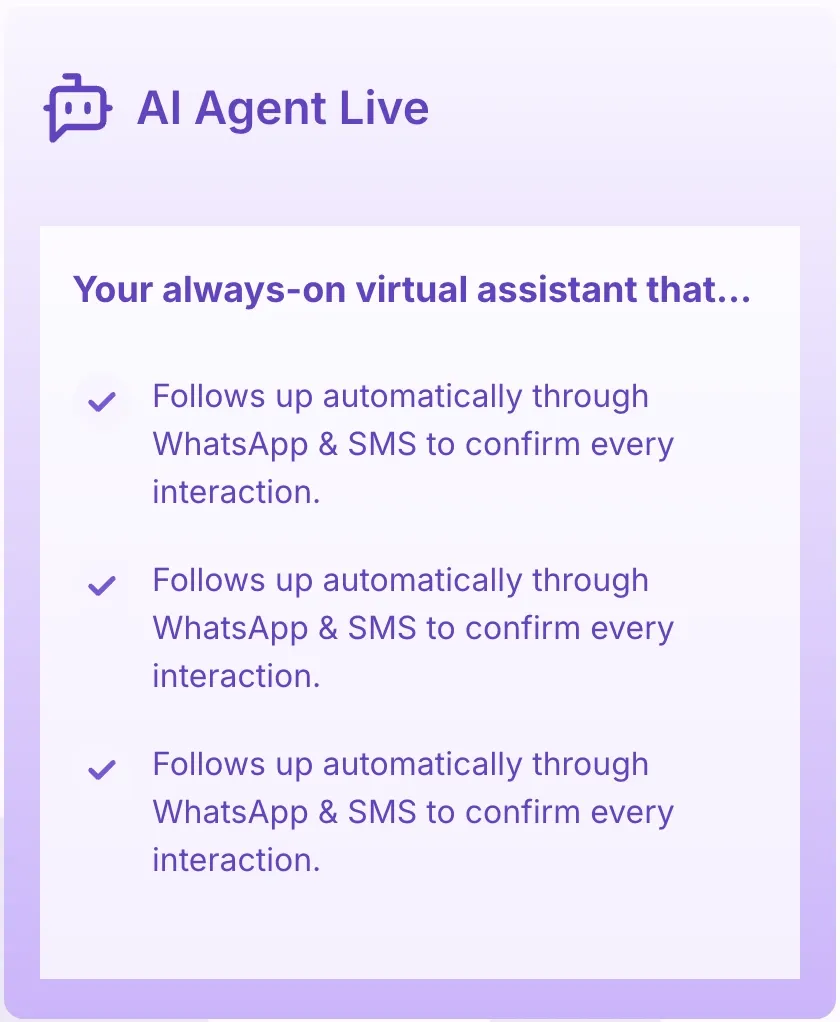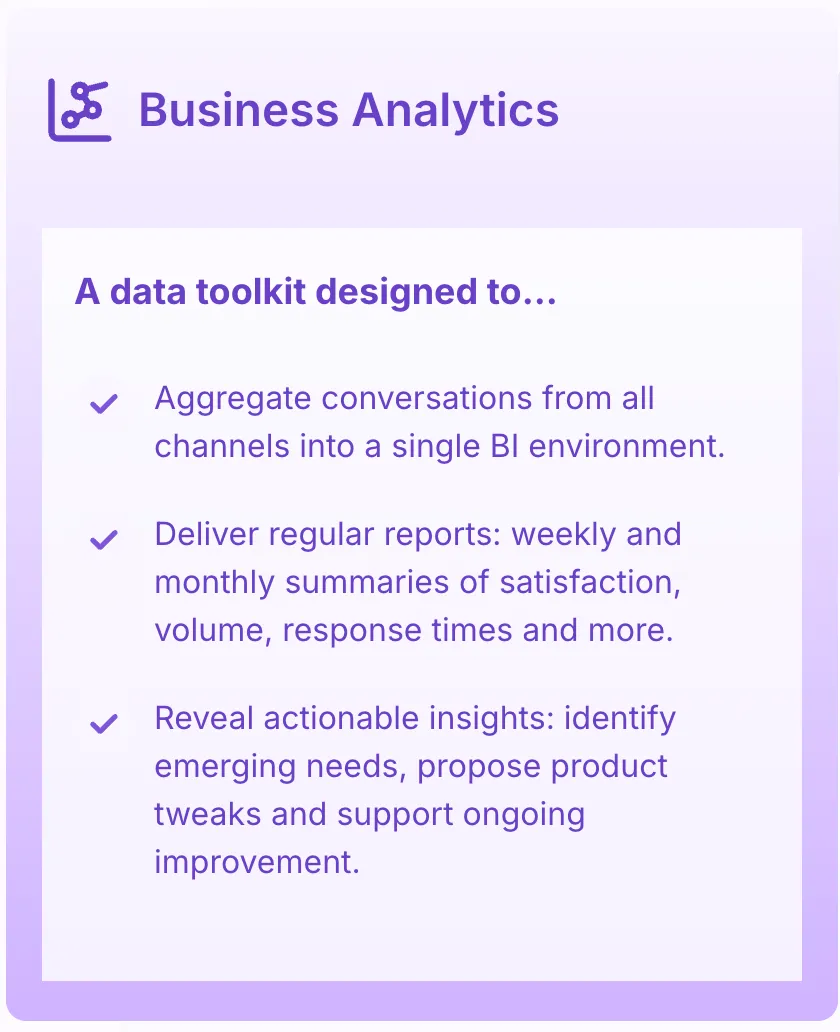The online marketplace has become highly competitive, where simply having good products and prices is not enough to succeed. Outstanding customer service is now what separates successful brands from the rest. Research reveals a surprising truth: while 87% of businesses think they provide excellent support, only 11% of customers agree.
Customer expectations have changed significantly in recent years:
- Instant responses are now expected, not just a luxury
- Personalized interactions are required at every point of contact
- Smooth experiences across various channels are mandatory
- Self-service options must be easily accessible
These increased expectations directly affect brand loyalty - 95% of consumers say that customer service plays a vital role in their loyalty to a brand. Businesses that meet these demands can build long-lasting relationships, while those who don't risk losing customers to competitors who prioritize service.
The Importance of Ecommerce Customer Service in 2025
Superior customer service is the key to ecommerce success. Research shows that an astonishing 95% of consumers consider service quality crucial in their brand loyalty decisions. This strong link between excellent service and customer retention will shape the online marketplace in 2025.
Customer satisfaction drives measurable business outcomes:
- Higher Purchase Frequency: Satisfied customers make 3x more repeat purchases
- Reduced Return Rates: Proactive support decreases returns by up to 40%
- Increased CLV: Engaged customers spend 67% more over their lifetime
Proactive customer support transforms potential issues into opportunities:
- Real-time order tracking updates
- Personalized product usage guidance
- Pre-emptive shipping delay notifications
- Automated maintenance reminders
These preventive measures create a support system that addresses concerns before they escalate into complaints. The result? A significant reduction in return requests and customer dissatisfaction.
Building trust through memorable experiences amplifies customer lifetime value. Businesses implementing personalized support strategies report:
- 28% increase in customer retention
- 33% higher average order value
- 45% improvement in brand advocacy
The data speaks clearly - exceptional customer service in ecommerce doesn't just solve problems; it creates lasting relationships that drive sustainable business growth through authentic customer connections and proactive engagement.
Key Ecommerce Customer Service Strategies for 2025
The ecommerce landscape demands innovative customer service approaches to meet rising consumer expectations. Here are the transformative strategies shaping customer support in 2025:
1. Multichannel Support Integration
- Live chat systems with instant response capabilities
- Email support with automated routing and prioritization
- Social media monitoring and engagement tools
- SMS and messaging app integration
- Video chat options for complex product demonstrations
2. AI-Powered Customer Assistance
- Smart chatbots handling basic inquiries 24/7
- Automated order tracking and status updates
- Predictive analytics for anticipating customer needs
- Natural Language Processing for accurate query interpretation
- Real-time translation services for global customers
3. Data-Driven Personalization
- CRM systems tracking customer preferences and history
- Tailored product recommendations based on browsing patterns
- Customized support responses reflecting previous interactions
- Behavior-based engagement triggers
- Personalized follow-up communications
4. Self-Service Resources
- Interactive knowledge bases with search functionality
- Video tutorials and product guides
- Community forums for peer-to-peer support
- Dynamic FAQs updated based on common queries
- Step-by-step troubleshooting wizards
These strategies create a robust support ecosystem where customers receive assistance through their preferred channels while businesses maintain efficiency through automation and personalization. The integration of these elements enables brands to scale their support operations without compromising service quality.

Implementing Multichannel Customer Support Effectively
Successful multichannel customer support creates a unified brand experience across all communication platforms. Your customers expect seamless transitions between channels - whether they start a conversation on social media and continue through email, or switch from live chat to phone support.
Key Benefits of Integrated Communication Channels:
- Reduced Response Time: Teams can address inquiries faster by leveraging the most appropriate channel
- Enhanced Customer Satisfaction: Customers choose their preferred communication method
- Improved Data Collection: Cross-channel interactions provide comprehensive customer insights
- Higher Resolution Rates: Access to complete conversation history enables better problem-solving
Best Practices for Channel Management:
- Create Channel-Specific Guidelines
- Maintain consistent brand voice across platforms
- Set appropriate response time expectations
- Define escalation protocols for each channel
- Social Media Management
- Monitor mentions and direct messages consistently
- Address public complaints promptly
- Move sensitive discussions to private channels
- Live Chat Integration
- Position chat widgets strategically on high-traffic pages
- Staff chat support during peak business hours
- Enable chatbot support during off-hours
- Email Support Enhancement
- Use templates for common inquiries
- Implement ticket routing systems
- Track conversation threads for context preservation
Your support team needs proper training and tools to manage multiple channels effectively. Invest in unified customer service platforms that consolidate all communications into a single dashboard for streamlined operations.
Personalization in Ecommerce Customer Service
Personalized customer support transforms generic interactions into meaningful connections that drive customer loyalty. Your customers expect tailored experiences that reflect their preferences, purchase history, and behavior patterns.
Key Elements of Personalized Support:
- Addressing customers by name
- Referencing past purchases
- Suggesting relevant products based on browsing history
- Remembering communication preferences
- Providing customized solutions to specific issues
AI-driven personalization tools analyze vast amounts of customer data to create detailed profiles and predict customer needs. These systems track:
- Purchase patterns
- Website navigation behavior
- Product preferences
- Support ticket history
- Response rates to previous recommendations
The impact of personalized support extends beyond customer satisfaction:
- 15% increase in conversion rates through targeted product recommendations
- 25% higher customer retention rates with personalized communication
- 40% reduction in support ticket resolution time using customer history
AI tools enhance support teams' capabilities by:
- Automatically routing inquiries to agents with relevant expertise
- Suggesting response templates based on customer context
- Identifying potential issues before they escalate
- Creating dynamic FAQ sections based on customer segments
Real-time personalization adapts support interactions as they happen. When a customer contacts your support team, AI systems instantly provide agents with relevant customer information, enabling them to deliver contextually appropriate assistance without delays.
How Automation Improves Efficiency in Ecommerce Customer Service
Automation is changing the game for ecommerce customer service. It takes care of repetitive tasks, making things faster and more efficient, while still keeping that personal touch that customers appreciate.
Benefits of Automating Customer Service:
Here are some key advantages of using automation in your customer service:
- Always Available: With automation, you can provide instant responses to customer inquiries 24/7, even outside of regular business hours.
- Cost Savings: By automating certain tasks, you can reduce operational costs and allocate resources more efficiently.
- Consistency: Automation ensures that every customer receives the same level of service, regardless of who is handling their inquiry.
- Scalability: During busy periods or peak seasons, automation allows you to scale your support operations without hiring additional staff.
- Increased Productivity: With automated systems in place, your team can focus on more complex issues and tasks that require human intervention.
How Chatbots Use Automation
Advanced chatbots powered by Natural Language Processing (NLP) technology, such as Yellow.ai, are capable of handling common customer inquiries with impressive accuracy. These AI-driven solutions can:
- Track Orders: Customers can easily check the status of their orders by simply asking the chatbot.
- Check Product Availability: Instead of waiting for a human agent to respond, customers can quickly find out if a specific product is in stock.
- Troubleshoot Issues: The chatbot can guide users through basic troubleshooting steps for common problems.
- Process Returns and Exchanges: Customers can initiate returns or exchanges directly through the chatbot without having to speak with an agent.
- Collect Customer Information: When necessary, the chatbot can gather initial details from customers before handing off the conversation to a human agent.
The Power of Combining Automation and Human Support
While automation brings many benefits, it's important to recognize its limitations. There will always be situations where human intervention is required to resolve complex issues or provide personalized assistance.
This is where the true strength of automation lies – in its ability to work hand-in-hand with human agents. When chatbots encounter problems they can't solve on their own, they seamlessly transfer the conversation to a support staff member.
Tips for Implementing Automation Effectively
To make the most out of your automation efforts, consider these strategic implementation tips:
- Start Small: Begin by automating simple and repetitive tasks that don't require much decision-making.
- Define Handoff Triggers: Clearly establish when and how conversations should be handed off from bots to humans.
- Measure Performance: Use analytics tools to track how well your automated systems are performing and identify areas for improvement.
- Update Regularly: Keep your chatbot's knowledge base up-to-date with new information about products, policies, and procedures.
- Train Your Team: Provide training for your staff on how to effectively collaborate with automated systems.
Examples of Automation in Ecommerce
Many modern ecommerce platforms have integrated automation into various customer touchpoints:
- Sending follow-up emails to recover abandoned carts
- Sending order confirmation messages after a purchase
- Providing shipping status updates via SMS or email
- Requesting reviews from customers after they receive their orders
- Notifying customers when a previously out-of-stock item is back in inventory
By leveraging these automated processes, businesses can handle a significant portion of routine inquiries without needing direct involvement from human agents.
The Impact on Customer Service Operations
According to industry estimates, smart businesses are now using automation to manage up to 80% of their regular customer inquiries. This allows human agents to concentrate on resolving intricate problems and establishing emotional connections with customers – something that machines simply cannot replicate.
In conclusion, automation plays a vital role in enhancing efficiency within ecommerce customer service operations. By streamlining repetitive tasks while still allowing for human interaction when necessary, businesses can provide better support experiences for their customers while also optimizing their internal processes.

Building a Comprehensive Knowledge Repository for Self-Service Support
A well-structured knowledge base serves as the backbone of efficient ecommerce customer service. You can reduce support ticket volume by 60% through strategic implementation of self-service resources.
Key Components of an Effective Knowledge Base:
- Product documentation with detailed specifications
- Step-by-step troubleshooting guides
- Return and exchange policies
- Shipping information
- Payment-related questions
- Account management tutorials
Your knowledge base needs regular updates to reflect new products, policy changes, and common customer pain points. Support teams can track frequently asked questions and create detailed articles addressing these concerns.
Crafting Effective FAQ Responses:
- Use clear, simple language
- Include visual aids (screenshots, videos)
- Break complex processes into manageable steps
- Add relevant examples
- Link related articles for additional context
A robust search functionality helps customers find answers quickly. You can implement AI-powered search features that understand natural language queries and suggest relevant articles based on user behavior patterns.
Pro tip: Create template responses for common scenarios. Your support team can customize these templates for specific customer situations, maintaining consistency while reducing response time.
Support teams report a 30% reduction in ticket resolution time when using well-crafted knowledge base articles as reference material. This efficiency allows them to focus on complex issues requiring personalized attention.
Empowering Employees to Deliver Exceptional Customer Experiences
Skilled and empowered customer service representatives create lasting positive impressions on your ecommerce customers. A well-trained support team armed with decision-making authority transforms challenging situations into opportunities for building customer loyalty.
Essential Training Elements:
- Active listening techniques to understand customer needs
- Problem-solving frameworks for complex issues
- Emotional intelligence development
- Product knowledge mastery
- Crisis de-escalation methods
Your support team needs autonomy to make real-time decisions. Set clear guidelines for refunds, exchanges, and special accommodations while trusting employees to use their judgment within these parameters.
Empowerment Strategies:
- Establish tiered authority levels based on experience
- Create decision-making matrices for common scenarios
- Provide access to customer history and purchase data
- Allow representatives to offer goodwill gestures
- Implement regular skill development workshops
A culture of empowerment reduces customer wait times and increases first-contact resolution rates. When employees feel trusted and supported, they naturally extend that same level of care to customers.
Measuring Employee Success:
- Customer satisfaction scores
- Resolution time metrics
- Feedback from quality assurance reviews
- Peer recognition programs
- Customer compliments and testimonials
Regular coaching sessions help identify areas for improvement and celebrate successful customer interactions. This continuous development approach keeps your team engaged and motivated to deliver exceptional service.
Effective Crisis Management in Ecommerce Customer Service
Crisis management in ecommerce requires swift, strategic responses to protect customer relationships and brand reputation. Here's how to handle challenging customer situations effectively:
1. Immediate Acknowledgment
- Respond within minutes of receiving complaints
- Use personalized messages showing you understand their frustration
- Move heated social media discussions to private channels
2. Strategic De-escalation
- Listen actively without interruption
- Validate customer emotions: "I understand why this is frustrating"
- Stay calm and professional regardless of customer behavior
3. Solution-Focused Approach
- Present multiple resolution options
- Make exceptions to policies when warranted
- Offer meaningful compensation for serious issues
4. Documentation Protocol
- Record all interaction details
- Track patterns in customer complaints
- Use insights to prevent similar issues
5. Recovery Actions
- Send personalized follow-up messages
- Provide status updates proactively
- Create special offers to rebuild trust
Crisis Response Examples:
Shipping Delay: "We've expedited your order with overnight shipping at no cost, and added a $20 store credit for the inconvenience."
Product Issue: "We're sending a replacement immediately. Keep the original item, and enjoy 20% off your next purchase."
Remember: A well-handled crisis can transform an angry customer into a loyal advocate. Your response speed and solution quality determine the outcome.

Measuring Ecommerce Customer Service Success Metrics
Tracking customer service performance through data-driven metrics helps businesses identify areas for improvement and measure the impact of their support initiatives. Here are the essential KPIs that define service excellence:
1. Customer Satisfaction Score (CSAT)
- Measures immediate customer happiness after interactions
- Calculated through post-interaction surveys
- Industry benchmark: 75-85% satisfaction rate
- Direct correlation with repeat purchase behavior
2. Net Promoter Score (NPS)
- Indicates customer loyalty and likelihood to recommend
- Scale of -100 to +100
- Scores above 30 considered excellent in ecommerce
- Strong predictor of business growth
3. Additional Performance Metrics
- First Response Time: Speed of initial customer contact
- Resolution Rate: Percentage of issues solved
- Customer Effort Score: Ease of getting support
- Average Handle Time: Duration of support interactions
4. Brand Reputation Impact
- Higher CSAT scores lead to 2.4x increase in positive reviews
- Strong NPS correlates with 16% premium on products/services
- Quick response times generate 25% more positive social mentions
- Satisfied customers share experiences with 11 people on average
Your metrics dashboard should align with your business goals. A fashion retailer might prioritize first response time during sale seasons, while a SaaS company could focus on resolution rates for technical issues.
Leveraging Customer Feedback for Continuous Improvement
Customer feedback is a valuable resource for ecommerce businesses looking to improve their service delivery. Here's how you can effectively collect and use customer feedback:
Direct Feedback Channels
- Post-purchase surveys
- Product reviews
- Customer service interaction ratings
- Live chat feedback forms
- Social media comments and messages
Proactive Feedback Collection
- Triggered email surveys based on customer actions
- In-app feedback prompts
- Website exit surveys
- Abandoned cart follow-ups
- Customer interviews
Strategic Implementation Tips
- Keep surveys short and focused
- Ask specific questions about recent interactions
- Use a mix of rating scales and open-ended questions
- Time your feedback requests appropriately
- Offer incentives for detailed feedback
Advanced Feedback Analysis
- Use sentiment analysis tools to process customer comments
- Track feedback trends across different channels
- Identify common pain points and success areas
- Create action plans based on recurring themes
- Share insights across departments
The key is to have a systematic approach to collecting and analyzing feedback. By setting up dedicated channels for feedback and regularly reviewing the results, you can identify issues, find opportunities for improvement, and adjust your service strategies to meet changing customer needs.
Benefits of Superior Ecommerce Customer Service in Business Growth
Superior customer service creates a ripple effect of positive business outcomes. Research shows that brands delivering exceptional support experience:
1. Increased Customer Lifetime Value (CLV)
- 86% of customers spend more with businesses providing outstanding service
- Loyal customers make 3x more purchases than first-time buyers
2. Enhanced Brand Reputation
- Satisfied customers share positive experiences with 9-10 people on average
- 72% of customers recommend brands after excellent service interactions
3. Reduced Marketing Costs
- Happy customers become brand advocates, generating free word-of-mouth marketing
- Customer acquisition costs decrease by 50% through organic referrals
4. Competitive Market Advantage
- 73% of customers choose brands based on customer service quality
- Businesses with superior support command premium pricing power
The impact extends beyond direct sales - exceptional service creates a sustainable growth engine through natural brand advocacy. Companies investing in customer service excellence see measurable improvements in market share, customer retention rates, and revenue stability.
Future Outlook: The Intersection of Technology & Human Empathy in Ecommerce Support
The future of ecommerce customer service lies in striking the perfect balance between technological advancement and human connection. AI-powered systems will handle routine tasks with increased sophistication, freeing human agents to focus on complex, emotionally-nuanced interactions.
Key developments shaping the future:
- Advanced sentiment analysis tools detecting customer emotions in real-time
- Predictive analytics anticipating customer needs before issues arise
- Virtual reality support enabling immersive product demonstrations
- Biometric authentication streamlining customer verification processes
The human touch remains irreplaceable in building authentic relationships. Successful brands will invest in both cutting-edge technology and emotional intelligence training for support teams, creating seamless experiences that combine efficiency with genuine human understanding.
The winning formula: Technology powers the service, but human empathy drives the connection.
FAQs (Frequently Asked Questions)
What is ecommerce customer service and why is it important in 2025 ?
Ecommerce customer service in 2025 encompasses all support interactions between online retailers and customers, focusing on delivering exceptional experiences across multiple channels. It is a critical differentiator in the competitive digital marketplace, driving brand loyalty by meeting evolving customer expectations and enhancing satisfaction.
How does superior ecommerce customer service impact brand loyalty and customer lifetime value ?
Superior ecommerce customer service significantly boosts brand loyalty, influencing 95% of consumer decisions. By providing proactive support that reduces returns and complaints, it fosters trust and memorable experiences, which in turn increases customer satisfaction, repeat purchases, and overall customer lifetime value (CLV).
What are the key strategies for effective ecommerce customer service in 2025 ?
Key strategies include implementing multichannel support such as live chat, email, and social media to ensure seamless communication; leveraging AI and chatbots to handle routine inquiries and improve response times; offering personalized support through CRM systems and data-driven insights; and providing self-help options like knowledge bases and FAQs to empower customers.
How can businesses effectively implement multichannel customer support ?
Businesses can integrate multiple communication channels to create seamless experiences by managing social media interactions alongside traditional channels like email and live chat. Best practices involve ensuring consistent messaging, timely responses across platforms, and utilizing unified systems to track customer interactions efficiently.
What role does personalization play in ecommerce customer service ?
Personalization creates tailored shopping experiences that enhance conversion rates and foster loyalty. AI-driven tools analyze customer data to deliver relevant product recommendations and proactive support, making customers feel valued and understood throughout their buying journey.
How does automation enhance ecommerce customer service efficiency without compromising empathy ?
Automation, through advanced NLP chatbots like Yellow.ai, handles routine inquiries at scale especially during peak periods, improving response times and operational efficiency. Balancing automation with human empathy ensures extraordinary experiences by allowing staff to focus on complex issues requiring personalized attention.












